From urban planning, to adaptation in insects being transferred into car designs, to carbon-zero architecture, to cities functioning as ecosystems, biomimicry, in imitation of natural elements, systems and models, has produced a number of extraordinary products in efforts to solve complex human issues. In order to exhibit “the potential of novel design, simulation and fabrication processes in architecture,” The Institute for Computational Design (ICD) and the Institute of Building Structures and Structural Design (TKE) of the University of Stuttgart have created another bionic research pavilion which structurally mimics the forewings of beetles.
ICD ITKE Research Pavilion 2013-14 from ICD on Vimeo.
As a segment of a series of research pavilions, the emphasis of this particular project used high-res 3D beetle models of various beetle elytra to form a custom robotic construction procedure for modular, double layered fiber composite structures, decreasing the necessary amount of framework, while offering more geometric freedom.
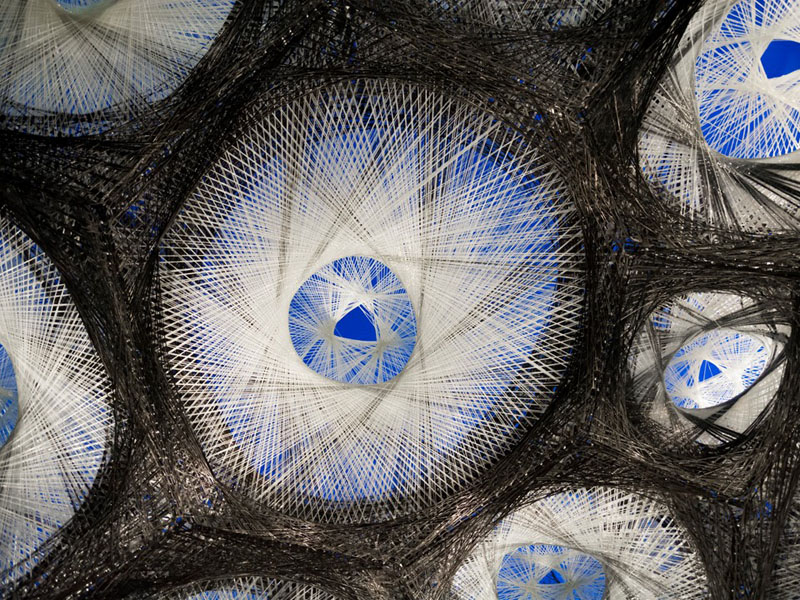
In the prototype, a “total 36 individual elements were fabricated, whose geometries are based on structural principles abstracted from the beetle elytra. Each of them has an individual fiber layout which results in a material efficient load-bearing system.”

Completed in 1.5 years by students and researchers within a multi-disciplinary team of biologists, paleontologists, architects and engineers, the completed, lightweight pavilion, covers 538 square feet at a mere 1,307 pounds.
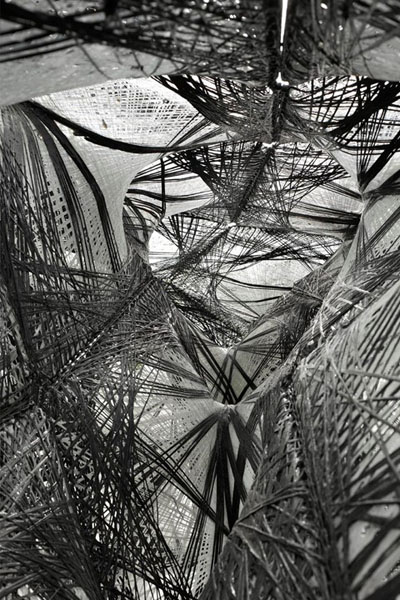
“During the investigation, the Elytron, a protective shell for beetles’ wings and abdomen, has proved to be a suitable role model for highly material efficient construction. The performance of these lightweight structures relies on the geometric morphology of a double layered system and the mechanical properties of the natural fiber composite. The anisotropic characteristic of this material, which consists of chitin fibers embedded in a protein matrix, allows for locally differentiated material properties.”
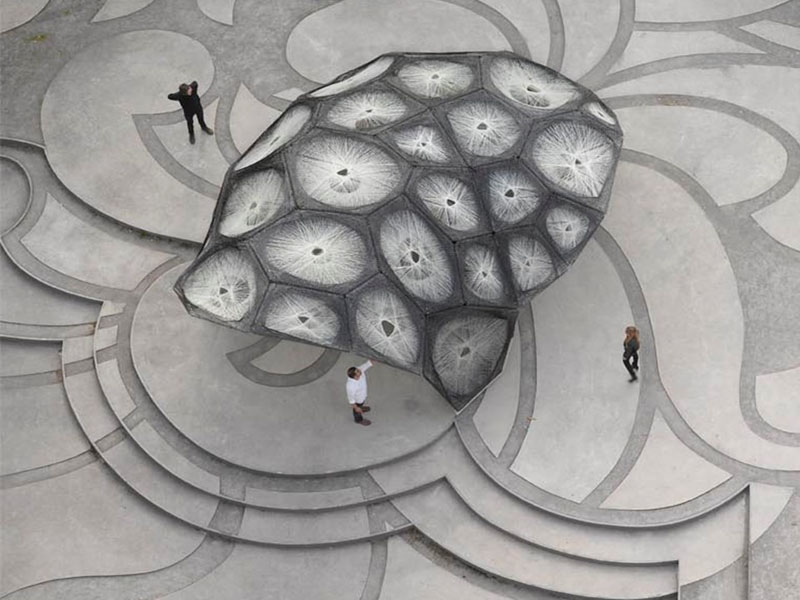
Glass and carbon reinforced polymers were used due to their high strength to weight ratio; robotically woven into 36 interlaced modules, and dipped in resin.
“Together with their unrestrained moldability, fiber reinforced polymers are suitable to implement the complex geometries and material organizations of the abstracted natural construction principles. Conventional fabrication methods for fiber composite elements require a mold to define form. However, this method proves to be unsuitable to transfer natural construction principles into architectural applications since they usually involve unique elements that would require extensive formwork and prohibitively complex molds.”

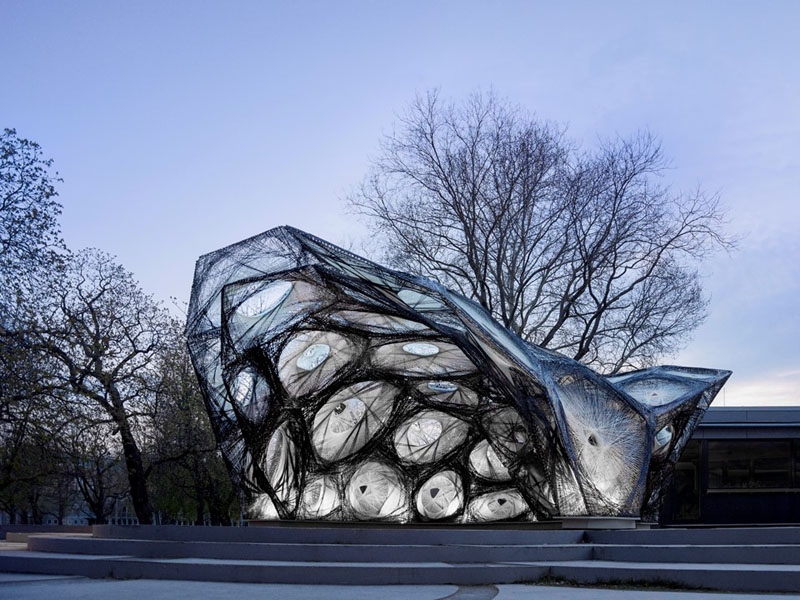





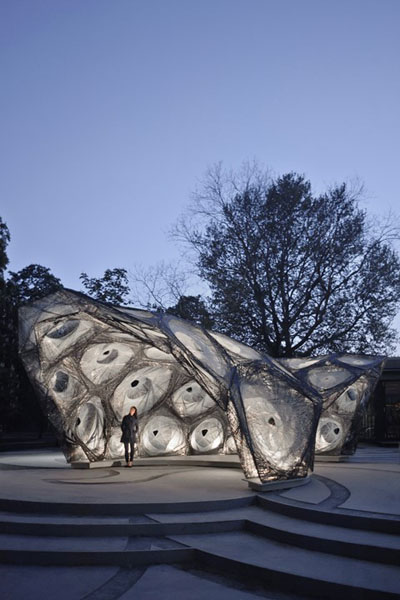
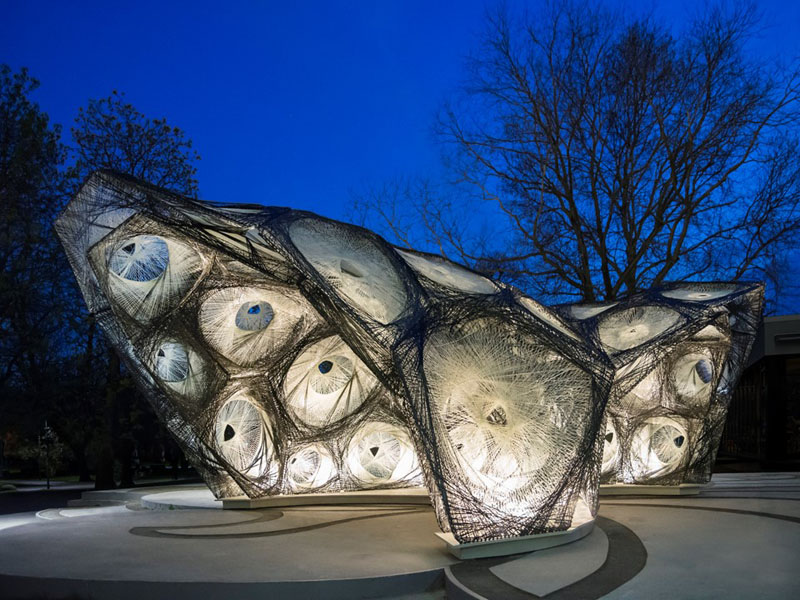

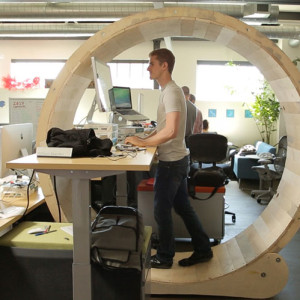


Leave a reply